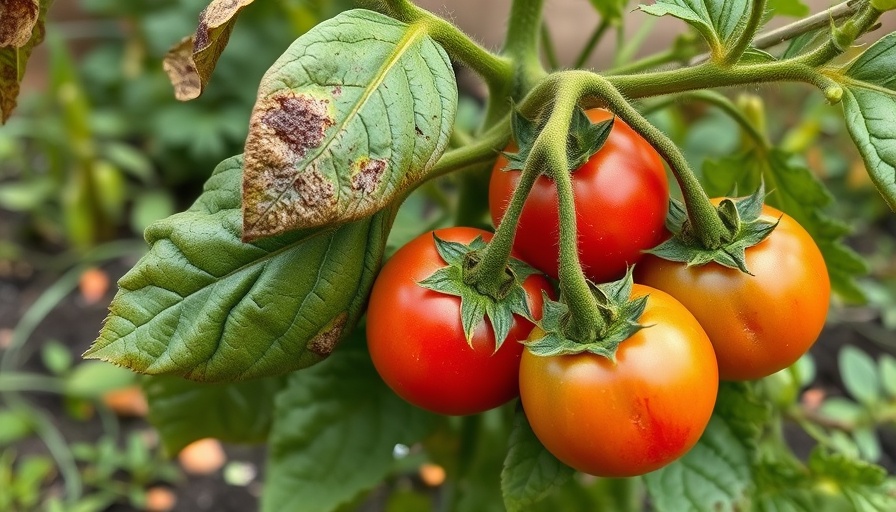
Understanding Tomato Blight: What You Need to Know
Tomato blight can be a gardener's worst nightmare, threatening not just the aesthetics of a garden but also its productivity. The key to successful gardening lies in recognizing and reacting promptly to these diseases—early blight, late blight, and Septoria blight. Each type has its symptoms and treatment approaches, making awareness and education crucial for every backyard enthusiast.
What are the Different Types of Tomato Blight?
Recognizing the type of blight affecting your tomatoes is critical for effective treatment. Early blight, caused by Alternaria solani, often shows up first with yellowing leaves and dark, concentric lesions. In contrast, late blight, a notorious water mold known as Phytophthora infestans, leads to rapid decay and can devastate entire crops if not swiftly addressed. Finally, Septoria blight, caused by Septoria lycopersici, appears as numerous small brown spots, predominantly on the lower leaves.
Prevention is Key: Gardening Tips for Healthy Tomatoes
Preventing tomato blight starts long before you see any symptoms. Consider these essential gardening tips:
- 1. Choose Resistant Varieties: Start with disease-resistant tomato strains that can withstand environmental stressors.
- 2. Proper Irrigation: Water your garden at ground level to avoid wetting the foliage, a key contributor to fungal growth.
- 3. Maintain Airflow: Space out your plants appropriately and stake them to ensure good air circulation, which reduces humidity around the foliage.
- 4. Mulch and Clean Regularly: Not only does mulch help control weeds, but it also keeps soil moisture steady and prevents soil-borne diseases from splashing up onto leaves.
Treatment Options: What to Do if Your Plants Are Affected
If your tomatoes are battling blight despite preventive measures, it’s time to act:
- Organic Fungicide: Products such as copper-based fungicides can control fungal infections while keeping the garden eco-friendly.
- Synthetic Fungicide: For severe infestations, chemical fungicides may be necessary, but they should be used judiciously, considering environmental impacts.
- Biofungicide: Harness the power of beneficial microorganisms to combat fungal diseases without chemicals.
Future Trends in Tomato Gardening: Sustainable Practices
As we become more aware of the environmental impacts of agriculture, trends are shifting toward more sustainable practices in gardening, such as biofungicides and organic pest control. Implementing crop rotation and companion planting can also enhance soil health while minimizing disease pressures in the garden.
Embracing Community and Collective Gardening Knowledge
The joy of gardening goes beyond the individual; it fosters a community spirit where tips and experiences are exchanged. Joining a garden club or online gardening forum can provide valuable insights and support. Remember, every gardener has dealt with blight at some point, and sharing personal experiences can help others navigate their challenges more effectively.
Taking Action: The Importance of Education and Resources
Staying informed about how to prevent and treat tomato blight is just the beginning. Explore local workshops or online courses that emphasize sustainable gardening techniques. By equipping yourself with knowledge, you can help protect your plants while practicing environmentally friendly methods that support the broader ecosystem.
In summary, managing blight in your tomatoes requires vigilance, prompt action, and a willingness to learn. By applying these gardening tips, you can not only keep your tomatoes healthy but also foster a thriving outdoor environment that contributes positively to your home and community.
 Add Row
Add Row  Add
Add 




Write A Comment